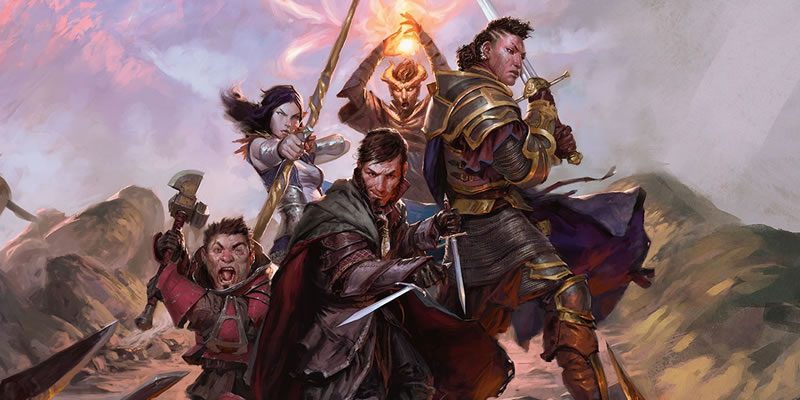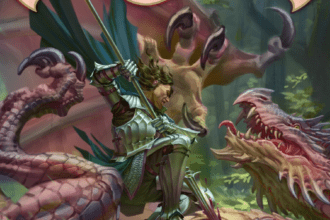Unearthed Arcana: Sidekicks Breakdown

Oh hey, this month’s Unearthed Arcana covers something I’ve been asking for and working with in my own writing! That’s neat. It’s handled in a 1-20 class progression format, to make sure your favorite NPCs from the early game can stay with you and survive through the endgame as well. Let’s dive in and see what goes on here.
Baseline Functions
These rules are only intended to apply to adventuring NPCs of CR 1 or lower. There’s a sidebar explaining that higher-CR companions can have their CR advanced with the DMG’s rules, but this document isn’t intended for them. I’m not completely sure what companion monster type would be a problem for one of these three classes.
This is very much a look back to the “NPC classes” of 3.x: the warrior, expert, and adept. Here the adept has been renamed spellcaster and is manifestly what the adept should have done in the first place. I’m getting ahead of myself.
- Sidekicks level when the character to whom they are a sidekick levels. Yay for not having another XP total to track. It’s not explicitly stated whether they receive a share of XP for purposes of reducing what each PC receives.
- Sidekick Hit Dice are based not on their class, but on their stat block – and thus, for the most part, based on size. This is brutal for any Tiny creatures you might have wanted as a companion. Fortunately, Tinkerbell is a PC and has PC-style Hit Dice, not d4s. The other extreme case, a Large or Huge creature that could become a spellcaster and thus have an unusually large number of hit points, is pretty corner-case within the parameter of CR 1 and lower.
- Because proficiency bonus and ability score bonus can be figured out from a stat block’s attack math but aren’t listed, there are two sections on applying improved proficiency bonuses and ability score improvements.
- The sidebar explaining the distinction between Multiattack and Extra Attack is very important and I would bet that many people are reading it for the first time in this document.
- Notably absent are any baseline of weapon, armor, shield, skill, or saving throw proficiencies. We’ll get to that in the individual sidekick class writeups.
Warrior
First up is the warrior. Note that it, too, is not written with a baseline of weapon, armor, shield, skill, or saving throw proficiencies. Instead, they receive some of each of those in the first class feature. If you don’t already get why this could ever matter, it’s that with proficiencies stored in a class feature, it would benefit some types of characters to multiclass into warrior, as a low-cost way to receive those proficiencies. PCs can’t do that, but I anticipate some number of wiseacres asking.
In brief, the warrior is the fighter class, with only one saving throw proficiency, no Fighting Styles, Danger Sense instead of Action Surge, and the Champion subclass rather than an option. Instead of tracking the regeneration of Survivor, they get a second use of Second Wind. Where the Champion receives a second Fighting Style, the warrior receives Improved Defense – the Defense fighting style. Instead of Remarkable Athlete, they get Battle Readiness, which is advantage on initiative rolls.
If anything, I’m surprised this isn’t stripped down further. I assume the features that have been cut are mostly the really flashy ones that have the highest cost for slowing down a turn and/or do the most to make you feel cool. I can’t find much to object to here. It’s weaker than the fighter, but by a much narrower margin than the 3.x warrior was to the 3.x fighter.
Expert
The expert is more like the rogue than any other class, but without Sneak Attack it’s not that much like the rogue’s core gameplay. It blends in some of the bard’s skill-focused play and some of the Mastermind’s benefits for friends. I’m fairly sure some people in my broader gaming community would happily play this class as their PCs. It is incredibly good for any area of skill-based play; it also gets 7 ASIs.
The combat gameplay here is stripped way down – don’t bring an expert to a serious throwdown if you have another option. Cunning Action helps them stay alive in the midst of the chaos, at least. In social interaction and exploration scenes, an expert runs a very strong risk of stealing the spotlight from everyone else, and the only thing stopping them is that they’re eventually even better when they’re Helping.
Spellcaster
This is the most interesting of the three, because it offers intersections of features and spellcasting lists that you can’t otherwise get. It’s an effort to contain the great complexity of all of the spellcasting classes into something as manageable as possible, but it also means the side-‘lock casts spells like a sorcerer rather than using Pact Magic, and doesn’t have Patron or Pact features, or Eldritch Invocations. What the document correctly understands is that this stripped-down caster is sufficient for actual use at the table – it’s no longer about the first-hand player experience, but about external observation of character theme.
Where the spellcasting style of the spellcaster is basically a sorcerer without sorcery points, most of the features come from the Evocation wizard, but with Focused Casting from Conjuration rather than Overchannel, which takes a lot more thought to use well. You could do a lot worse than playing this class as a PC.
Conclusion
The intended use of these classes is for NPCs that are full-time party members, but I’ve also seen a lot of efforts at roguelike campaigns. Instead of using fighter as the base class and making players earn all of the other classes (when fighter is super good in 5e), I’d say to start with warrior, expert, and spellcaster, and unlock PC classes from there.
It would be super great if this put an end to arguments about DMPCs and showed people a better way to make it all work. The key word here is sidekick.
I can’t find much to criticize in this document. It doesn’t take a lot of big risks, but it looks highly functional and I feel like I understand why they made these decisions. It displays a high level of polish. Eventually I’d like to see full support for sidekicks that start at higher CRs. I particularly like the ways the expert tries to keep the focus on the PCs; the warrior and spellcaster could stand to have more support features (though spell choice could lead to any gameplay role, of course).


